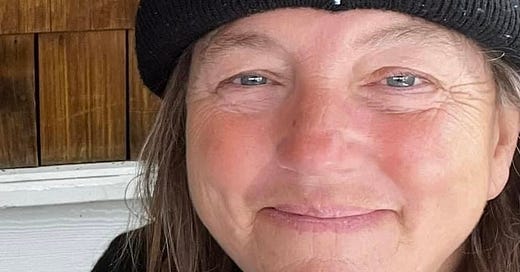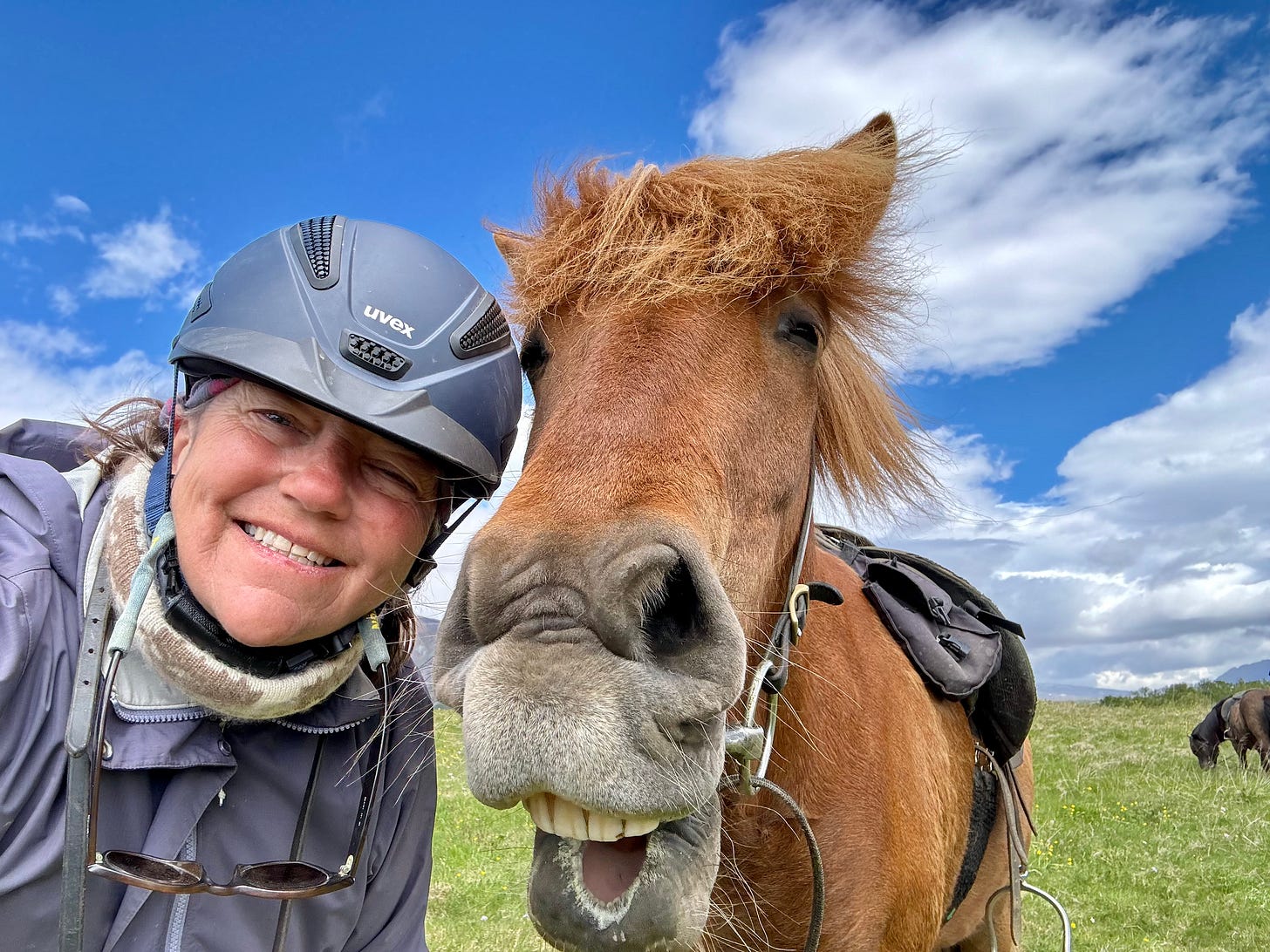Animals, the Earth, and Women's Bodies: A Conversation with Pam Houston
On the joy of fast Icelandic horses, wondrous aging bodies, conversations that live in our heads, rest, women and the earth and colonization, taking back freedom, bodily autonomy, and hope.
Intimate conversations with our greatest heart-centered minds
I was thirty when I read Pam Houston’s first book Cowboys Are My Weakness, but I remember that time vividly: Pam was young, she was a woman, and it was a collection of short stories. On what planet, especially in 1992, was that ever a recipe for success. But these stories were electric. Pam wrote about nature and women doing things they didn’t normally get to do (high water rafting, for one) and great sex and bad relationships and finding joy. It was exciting! Cowboys was named A New York Times Notable Book and became a bestseller. For all the young women writers back then, Pam’s words changed us.
Over the decades, Pam’s writing has only become more glorious. And her passions for animals, the natural world, and civil rights stronger, more vibrant, and more vocal. Her memoir Deep Creek is one of the most beautiful books I’ve read. Her essays about her relationship with her 140 acre ranch 9,000 feet above sea level in Colorado as well as with all the animals, domestic and wild, who share the land with her, her losses, her loves, her hard work to protect endangered lands and animals at home and around the world is breathtaking—and glitters with hope.
When I learned Pam had a new book coming out about abortion, Without Exception, I jumped at the chance to speak with her—but a part of me was sad that animals and the earth would become questions I would need to sideline. I’m delighted to report I was wrong. Pam beautifully weaves together women’s bodies, the earth, the animals, and so much more. It’s a gorgeous book, with much to teach us.
Pam has also written Waltzing The Cat, A Little More About Me, Sight Hound, Contents May Have Shifted, and Air Mail. She teaches in the Low Rez MFA Program at the Institute of American Indian Arts and is a professor of English at UC Davis. She’s also co-founded the non-profit Writing by Writers.
It was such a delight and honor to speak with Pam!
⭐️ Pam is graciously gifting three readers an autographed copy of Without Exception! If you’d like to be one of the recipients, please add “Exception” after your comment. The winners will be chosen at random on Monday, September 23rd and notified by Substack Direct Chat. Shipping is limited to the United States. ⭐️
Here’s Pam reading one of the many, many gorgeous chapters from Without Exception. It, of course, includes animals.
You have such a profound and intimate relationship with animals, both domestic and wild. Could you talk about what you see as the relationship between humans and animals?
One of the ways we went wrong as human beings was creating this hierarchy where we’re at the top of the food chain, and animals don’t have sentience. One great thing happening now is all these studies proving that animals do have sentience. There was a headline from The Guardian a couple of weeks ago saying that horses plan things in advance, and I thought, "Well, any 14-year-old horse girl could have told you that!" But still, if science has to back up what many of us know intuitively to start treating animals better and with more dignity, great.
For me, what I’ve learned from animals is almost limitless. I’ve learned how to love, how to die, and how to be with the dying.
My passion lately is Icelandic horses. They give me a full-on spiritual experience. They’re a protected breed—no other horses have been allowed in Iceland since about 841. These horses have been bred for qualities like strength, loyalty, and good sense. They help you stay out of trouble if you let them. They also live wild in giant herds, so when you ride them, you can’t just sit like a sack of potatoes and take pictures. If you try to sneak your phone out of your pocket for some gorgeous scenery, one ear will come back as if to say, "Hey, I thought we were in this together."
We ride with a giant herd of loose horses. If things go awry, if the herd breaks out, we’re in a swamp, a thunderstorm, or coming down a steep mountain, they need and give support. It’s a constant communication. That kind of cross-species communication has always thrilled me. I’ve had it with dogs and horses. I've had it occasionally with a very wild animal. Even once with an octopus that wrapped around my ankle. I believe that kind of communication has everything to teach me about being human, alive, present, moral, and fair.
Can you describe how the communication happens?







